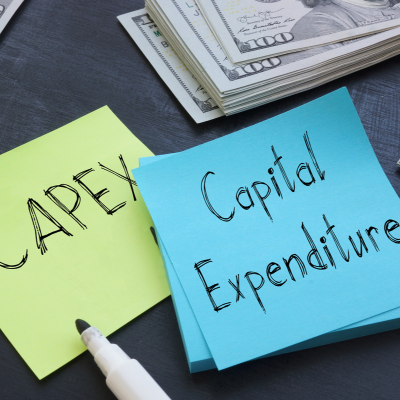How to manage your exhibition budget more effectively
The Importance of Managing Your Exhibition and Display Budget
Budget management is one of the essential elements when it comes to arranging an exhibition, conference, or trade show. It can be easy to get carried away with flashy display materials and solutions, only to find yourself short on funds for other critical elements. If you're unfamiliar with managing your own exhibition, we'll explain the importance of balancing your exhibition budget and share tips to ensure you allocate your resources wisely. There's also plenty of traps to watch out for.

Managing Your Budget
When planning your exhibition budget, it's essential to think beyond just the display materials. Here are some key areas to consider when allocating resources to ensure a well-rounded investment:
- Design: A visually appealing stand captures attention and leaves a lasting impression. Don't skimp on professional design services that can elevate your brand's presence.
"Design is not just what it looks like and feels like. Design is how it works." – Steve Jobs
- Materials: While it's tempting to go all out on high-end displays, it's crucial to strike a balance. Invest in quality materials that align with your budget without compromising on other aspects.
- Accommodation: Your stand team will be on their feet all day, engaging with visitors and representing your brand. Ensure they have a comfortable place to stay overnight to recharge and perform at their best.
By carefully distributing your budget across these areas, you'll create a more effective and enjoyable exhibition experience for both your team and your audience.

Accounting for Your Exhibition Stand as a Business Asset
An exhibition stand does not need to be a temporary creation for a single event; it can be considered a long-term investment and therefore accounted for as a business asset. By doing so, you can manage your finances more effectively and take advantage of certain accounting benefits.

Depreciation and Capital Expenditure
When you classify your exhibition stand as a business asset, you can amortise its cost over several years. This process, known as depreciation, allows you to spread out the expense, reducing the immediate impact on profitability. To do this, you will need to categorise the stand as capital expenditure. Capitalising the cost means you allocate the expense over the useful life of the stand, which could include multiple events over several years. On your balance sheet the stand would be considered an asset.

Tax Deductions
Capitalising your exhibition stand also opens up opportunities for tax deductions. By depreciating the stand's value over time, you can claim a deduction on your business tax returns for each year the asset is in use. This can provide significant tax relief via paper write-downs and improve your overall financial position.

Asset Management and Record-Keeping
Accurate record-keeping is helpful when adding an exhibition stand to your business asset register. Document the purchase cost, any additional modifications, and maintenance expenses. Regularly updating this information ensures transparency and aids in financial planning and audits. By tracking the stand as an asset, you gain a clearer picture of its value and depreciation over time, facilitating better budgeting and asset management.
In summary, considering your exhibition stand as a business asset allows for strategic financial planning, tax advantages, and improved asset management. This approach ensures your investment in exhibition materials provides lasting value beyond a single event.
Be Aware of the Hidden Costs
The unexpected and hidden costs can be plentiful when it comes to exhibitions. Here are some to be aware of:
- Ancillary staff costs, such as meal allowances, taxis, overtime, and entertainment. Looking after your staff is essential, meaning these costs can be far more than just airfares and salaries.
- The so-called 'over & aboves' on your stand which may not be well explained to you by the exhibition organiser prior to booking. These can include the provision of power or internet, carpet tiles, overhead rigging, and inclusion in the exhibition publications.
- Each venue has different charges when it comes to logistics. Some allow use of forklifts at no extra charge, and others can have minimum charges of more than $150 for handling of a single pallet. The same principle can apply with parking, access to loading docks, and on-site storage. For this reason it can be sensible to partner with an experienced team such as Displays 2 Go to navigate these matters on your behalf.
- A number of venues have firm requirements for technical drawings of your stand in order to obtain stand approval. If you don't already have these plans in the required layout this represents added cost (and potentially timing pressure) to have them prepared.
- If you are shipping your stand interstate or overseas it is generally a recipe for problems to try and send it directly to the venue. This typically means sending it to a third-party warehouse or logistics centre, adding more cost.
- The time-of-day with installations can result in extra overtime charges if your stand needs to be bumped in or out one weekends or in the evening. As an exhibitor you will typically have very little control over this as it is the exhibition organiser who sets the schedule for exhibitors.

The Power of Good Design
Investing in good design is one of the most impactful decisions you can make for your exhibition stand. A professional designer who understands your business and brand can create a cohesive and engaging display that draws visitors in. Here are some benefits of good design:
Brand Consistency: A designer who knows your brand can create a stand that seamlessly integrates with your overall brand identity, reinforcing your message and values.
Visual Appeal: Eye-catching designs attract attention and encourage people to visit your stand. A well-designed booth can make a significant difference in foot traffic and engagement.
Functionality: A professional designer considers not only aesthetics but also functionality. They can create a layout that maximises space, facilitates easy navigation, and enhances the visitor experience.
Of course, if you don't have anyone to help with this, ask us. We have years of experience, know what works and what doesn't, and are highly skilled in 3D design, which is an essential skill beyond pure graphic design.

Prioritising Stand Team Comfort
Your stand team plays a crucial role in the success of your exhibition. They're the face of your brand, interacting with visitors and creating lasting impressions. Given the demanding nature of their work, it's vital to prioritise their comfort and well-being. Here's why:
- Performance: A well-rested team is more energetic, attentive, and effective in engaging with visitors. Comfortable accommodation ensures they get the rest they need to perform at their best.
- Morale: Showing your team that you care about their comfort boosts morale and fosters a positive working environment. Happy team members are more likely to go the extra mile in representing your brand.
- Retention: Providing good accommodation and support can help retain skilled team members for future exhibitions, reducing turnover and ensuring consistency in your brand representation.
Additional Considerations for Budget Planning
While the previous sections have covered critical aspects of budgeting for an exhibition, there are a few more considerations that can often be overlooked but play a vital role in planning a successful event:


Technology Integration
Incorporating technology into your exhibition stand can significantly enhance visitor engagement and provide a modern touch to your display. Budget for interactive screens, virtual reality experiences, or augmented reality applications that can offer immersive brand experiences. Additionally, ensure you have reliable Wi-Fi, charging stations, and any other tech support necessary to keep everything running smoothly.

Marketing and Promotion
A well-designed stand is only effective if people know about it. Allocate part of your budget towards pre-show marketing, including social media campaigns, email newsletters, and press releases. Also, consider on-site promotional materials like brochures, flyers, and giveaways to attract and engage visitors.

Transport and Logistics
Transporting your exhibition materials to and from the venue can incur significant costs. Whether it’s hiring a van, paying for shipping, or using a logistics service, make sure to include these expenses in your budget. Additionally, plan for potential contingencies, such as delays or damage to materials, to avoid unexpected costs.

Staff Training
Investing in training for your stand team can make a significant difference in how effectively they represent your brand. Budget for workshops or training sessions focused on customer engagement, product knowledge, and selling techniques. Well-trained staff can convert more visitors into leads or customers, offering a better return on investment.

Post-Event Follow-Up
The work doesn’t end when the exhibition does. Ensure you have funds allocated for post-event activities, such as following up with leads, analysing the event’s success, and planning for future improvements. Effective follow-up can maximise the impact of your exhibition and ensure long-term benefits.

Environmental Considerations
Many businesses and their customers are increasingly concerned about sustainability. Investing in eco-friendly materials for your stand and promotional items can underline your brand’s commitment to environmental responsibility. Additionally, consider the long-term savings of reusable materials versus disposable ones.
Need to know more?
With over 20 years of experience in delivering exhibition, conference and trade show solutions, we've seen most things. And we've learned a lot along the way. Our friendly team are always happy to assist you with planning, design, production and logistics.
